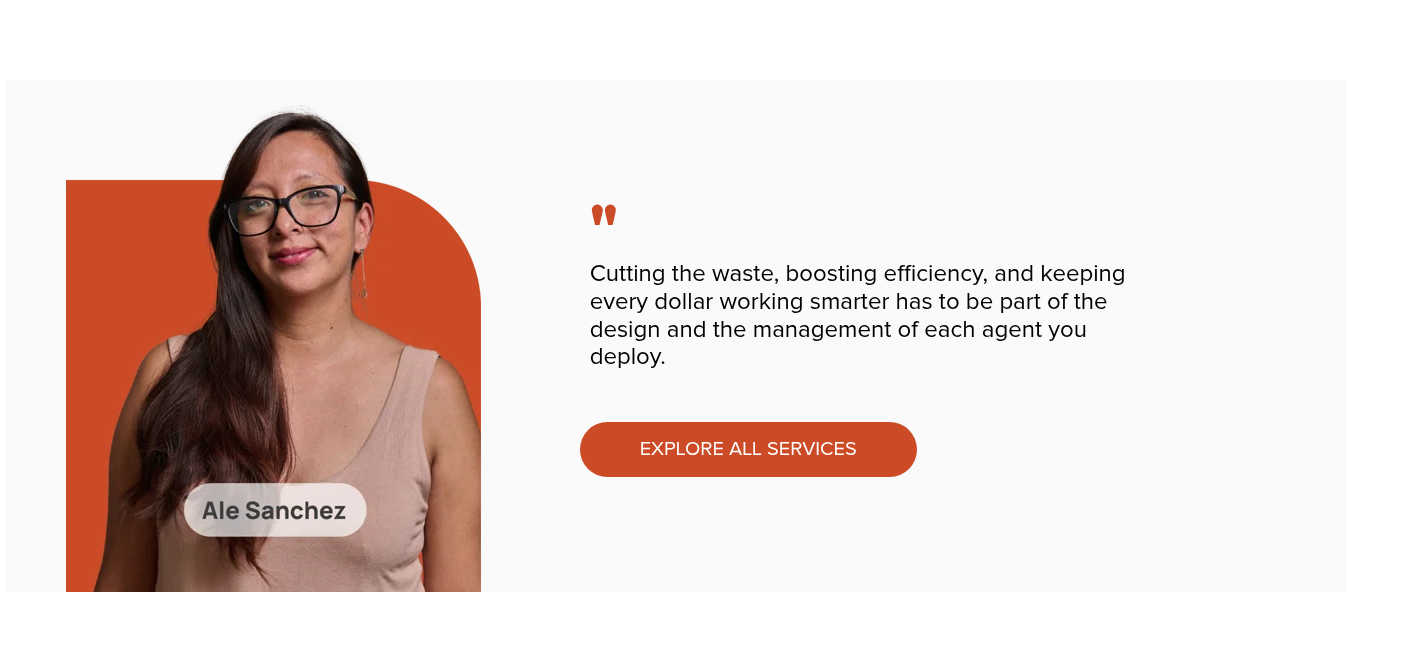Design
Intelligent Process Engineering

You don't just need to automate things; you need to create Intelligent Experiences for your organization.
Mapping out tedious workflows and redesigning them for autonomous AI agents to streamline is where logic designing comes into play. With Intelligent Process Engineering we partner with your teams to change how work gets done. This Intelligent Design keeps your most valuable asset—your people—involved, helping to achieve strategic goals while redesigning the flow of information and how your systems interact.
Why choose a partner who Designs AI Experiences for Humans?
Product and IT Leaders can achieve high adoption rates, engaging customer connections and improved time-to-value with high-fidelity prototypes and process re-engineering best practices.
- Outdated Systems and Manual Processes: Legacy systems and manual tasks create bottlenecks and slow operations.
- Fragmented Data: Disconnected systems lead to inconsistent data and a lack of unified operational view.
- Repetitive Tasks: Teams are burdened by high-volume, low-value tasks, reducing efficiency.
- Ineffective Automation: Automation without process optimization can add complexity rather than improvement.
- Lack of AI and Automation Roadmap: Leaders struggle to identify impactful opportunities for digital transformation.
Roadblocks holding back business performance?
How Tonic3 Makes AI Awesome for Humans:
Work with Tonic3 to Customize Your AI Roadmap
Create a scalable, user-friendly experience— with flexibility built in from the ground up
Whether or not we did the discovery, we can jump into designing intuitive, user-centered experiences and AI roadmaps. This phase is ideal for teams with defined use cases needing high-fidelity prototypes and a clear plan before building
- Intuitive UI/UX Design & Prototyping for Complex Platforms
- Sustainable Design Systems
- User Adoption & Change Management Design
- AI Roadmaps & Data Architecture Planning
The final results will include
Integrated systems and accelerated workflows built for trust, safety and traceability
AI platforms and dashboards adapted to specific governance and transparency requirements
B2B and B2C digital experiences that keep bringing customers back
How to Optimize Your Workflow: Process Redesign Frequently Asked Questions
My team and I focus on Intelligent Process Redesign to address these bottlenecks directly. This isn't just about automation; it's about fundamentally re-evaluating and optimizing your entire workflow. We start by analyzing your current processes to identify inefficiencies and then redesign them to be more efficient, leveraging automation to streamline tasks, reduce errors, and free up your team for more strategic work.
My team and I specialize in integrating disparate systems to create a unified and efficient workflow. Through Intelligent Process Redesign, we map out the flow of data across your organization and implement automation solutions that act as a bridge between your legacy systems. This approach eliminates manual data entry, ensures data consistency, and provides you with a single, clear view of your business operations.
My team and I use Intelligent Process Redesign to identify and automate those very tasks. We begin by pinpointing high-volume, low-value work and then apply a combination of process re-engineering and automation to streamline them. This approach significantly reduces the time your team spends on manual, repetitive work, leading to a substantial increase in operational efficiency, a reduction in human error, and a more engaged workforce.
This is a crucial distinction. My team and I believe that automation is most effective when it's built on a solid foundation of re-engineered processes. We don't just add a layer of automation; we use Intelligent Process Redesign to first identify and eliminate inefficiencies. This ensures that the automation you implement is a sustainable and effective solution that directly improves your workflow, rather than simply automating a broken process.
It can be overwhelming to know where to begin. My team and I start by conducting a thorough analysis of your business processes. We use Intelligent Process Redesign to identify the areas with the highest potential for improvement in terms of efficiency, cost reduction, and strategic impact. This data-driven approach allows us to pinpoint the optimal opportunities for automation and AI implementation, giving you a clear, actionable roadmap for your transformation journey.



